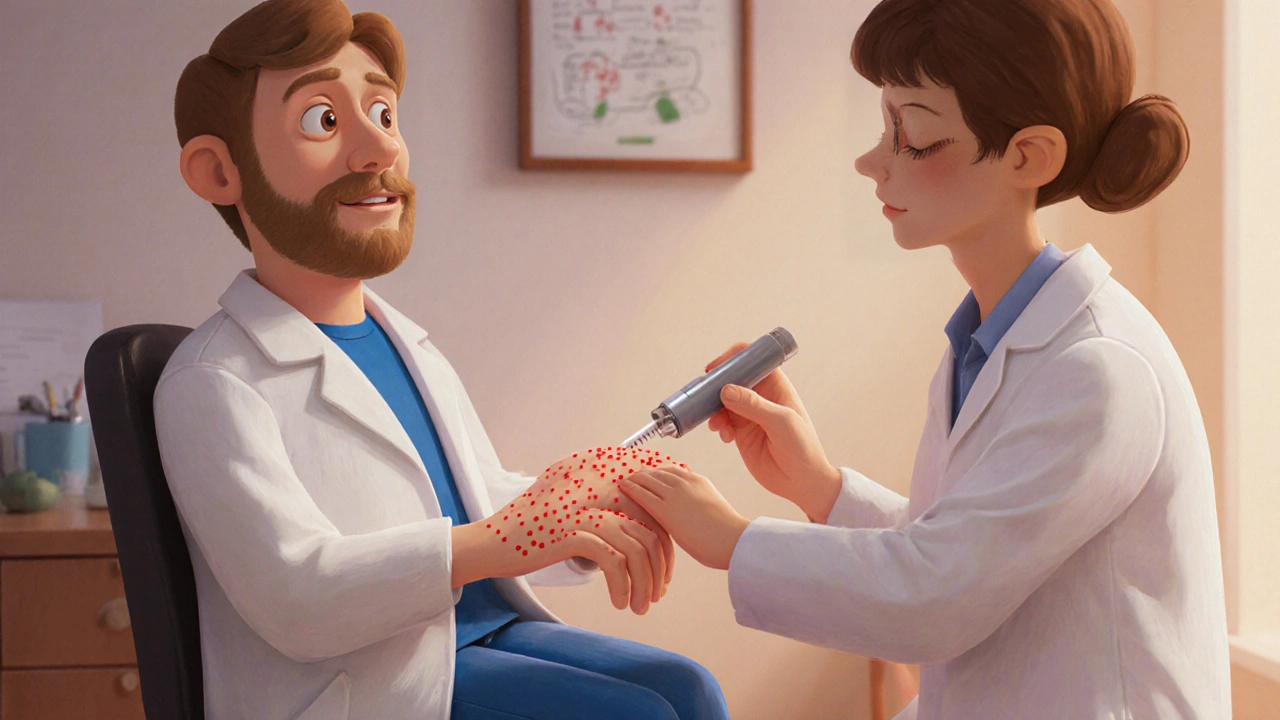Allergy Preparation: What Works, What Doesn't, and How to Stay Safe
When you're dealing with allergy preparation, the steps you take before exposure to allergens to prevent or reduce severe reactions. Also known as allergy management, it's not just about keeping antihistamines in your bag—it’s about knowing when they won’t be enough. Many people think allergy preparation means avoiding peanuts or pollen, but that’s only half the story. Real preparation means understanding your body’s warning signs, having the right tools ready, and knowing exactly what to do when things go wrong.
One of the biggest mistakes is assuming all reactions are the same. A runny nose isn’t the same as swelling in your throat. antihistamines, medications that block histamine to reduce itching, sneezing, and hives work well for mild symptoms like sneezing or itchy eyes—but they do nothing for breathing trouble or low blood pressure. That’s where epinephrine, a life-saving injection that reverses anaphylaxis by opening airways and raising blood pressure comes in. If you’ve ever been told to carry an EpiPen, it’s not because you’re being overly cautious—it’s because seconds matter. Studies show that delays in using epinephrine during anaphylaxis increase hospitalization risk by 70%. This isn’t theoretical. People die because they waited to see if symptoms "get worse." They don’t. They collapse.
Then there’s immunotherapy, a long-term treatment that gradually trains your immune system to tolerate allergens through regular exposure. It’s not a quick fix, but for people with severe pollen, dust mite, or insect sting allergies, it can cut reaction risk by over 80% after 3–5 years. It’s not for everyone, but if you’re on daily antihistamines year-round, it’s worth talking to an allergist. Most people don’t realize this option exists until they’ve been stuck in the same cycle for years.
What you won’t find in most allergy guides is how often people misdiagnose their own reactions. A stomach ache after eating shellfish? Could be food poisoning. A rash after a new soap? Might be contact dermatitis, not an allergy. True IgE-mediated allergies trigger symptoms within minutes and often involve multiple systems—skin, breathing, gut. If your reaction is only one symptom, like a single hive, it’s less likely to be life-threatening. But if you get hives and throat tightness and dizziness? That’s an emergency. No waiting. No "maybe it’ll pass."
And here’s something most people ignore: allergy preparation includes your environment. Cleaning your home isn’t just about dust—it’s about removing triggers before they trigger. Washing bedding weekly, using HEPA filters, keeping pets out of bedrooms—these aren’t suggestions. They’re shields. For someone with severe cat allergies, skipping this means living with constant low-grade exposure that wears down your body’s ability to cope.
Below, you’ll find real stories and science-backed advice on what actually works when it comes to preventing and managing allergic reactions. From which medications to keep on hand, to how to train family members to use an epinephrine injector, to what to do when a child has their first severe reaction—this collection cuts through the hype and gives you what you need to stay safe, not just informed.

